The major alcohol players are making brand extensions key to growth strategies. How has such NPD changed the rankings of Britain’s 100 Biggest Alcohol Brands?

Remember Guinness Red? How about Foster’s Ice? Diamond Black anyone? Or Carling C2? Just a few examples of the many drinks that have disappeared from pubs and shops over the years.
Yet despite a patchy track record, extensions to established brands keep on coming. Indeed, in today’s climate, with wafer-thin margins, low brand loyalty, anti-alcohol campaigning and rapidly changing consumer tastes, the role of the brand extension has never been more important. When you are targeting a generation that changes their mobile phone more frequently than your granddad changed his shirt, being able to introduce something new and exciting under a trusted and recognisable brand is an enviable advantage. Just ask Apple.
Download Britain’s 100 Biggest Alcohol Brands 2013 in PDF format.
Our annual survey of Britain’s 100 Biggest Alcohol Brands - in association with Nielsen - shows how important brand extensions have been to the market in the past 12 months - in some cases making the difference between brand recording a loss or a gain. Indeed, with £64.6m in extra sales, new products accounted for two thirds of the £99m net total sales increase [Nielsen 52w/e 27 April 2013] across the top 100 brands.
See the top 100 alcohol brands here.
Read our methodology here.
So where has innovation been most focused? Who’s been most successful? And how is the market most likely to develop?
Lower-abv
Brand extensions have a history of introducing, or at least driving, new categories - such as ‘ice’ beers in the 90s. And they have been doing it again in the past year with the birth of the lower-abv citrus lager category.
A cynic would argue these extensions mimic the ‘lager and limes’ of yesteryear, but they tap into two current trends. First, they offer a sweeter profile of fruit flavours, which has fuelled much of the growth in the cider market. Second, they deliver refreshment at a lower abv - which is important not only from a government perspective but also for more and more consumers.
“Extensions and innovations are about meeting a fairly specific criteria of renovating a core brand or moving it into an adjacent category”
Jeremy Gibson, Molson Coors
The new citrus beers aren’t far removed from Animée and Eve, the ‘female-friendly’ beers launched by Molson Coors and Carlsberg in 2011 and 2010 respectively and both withdrawn after about a year on the market. But both brewers learned how hard it can be to get a new brand off the ground - particularly when targeting a specific gender. And just months after the demise of Animée - which included a ‘zesty lemon’ flavour in its line-up - Molson Coors unveiled citrus-flavoured 2.8% abv Carling Zest. Since its roll-out in March 2012, the Zest range has been expanded with seasonal variants and brought £13m in extra sales to the Carling brand - as well being crowned alcoholic drinks brand of the year at The Grocer Gold Awards in June. Without the launch of Zest, the £25.2m brand-wide loss recorded by Carling would have been £38m.
“Ultimately, all brands must evolve and change in order to stay relevant,” says Jeremy Gibson, marketing director at Molson Coors, which has been one of the most prolific brewers in terms of brand extensions.
“Extensions and innovations are about meeting a fairly specific criteria of renovating a core brand or moving it into an adjacent category. Brands must seek to address a certain consumer need or requirement, which no other product on the market can address, in a unique and ownable way.”
While Zest’s lower-strength citrus offering was pretty unique at the time, it has sparked a host of similar launches from rival brewers - with 2.8% abv Carlsberg Citrus and 2% Foster’s Radler both launching in February this year. And just last month, Molson Coors went even lower than Zest’s abv, with the roll-out of 2% abv Carling Cooler in Asda in lemon and grapefruit flavours.
Read this
Which are the brands to watch?
Which alcohol brands are bubbling under our top 100? We pick 10 key names…
As well as saving money on brand building, these extensions are punching above their weight when it comes to retail prices. Of course, they tap into consumer demand for lighter beers and help appease Health campaigners - but arguably the biggest attraction is their higher margins.
A key reason for this is the reduced tax burden on weaker beers - at 2.8% abv or below, beers are charged at a lower rate. This potentially means better margins - particularly when your low-abv brand extension sells for about the same, or even more, than your parent brand.
Carling Zest, for example, has sold for an average £1.72 a litre - slightly lower than the £1.76 for standard Carling - but Carlsberg Citrus is selling for £1.76 compared with £1.66 for standard Carlsberg; and Foster’s Radler is £1.95 a litre against £1.76 for its parent brand.
While Carlsberg says it was unfair to compare the price of Citrus with its standard beer given the short length of time Citrus has been on sale, Heineken is happy to acknowledge the higher price being paid for its low-abv beer.
“Radler is a premium, bottled beer that will be priced at a premium to core Foster’s,” says a spokesman. “The development and sustainability of this new category is dependent on a robust pricing strategy and retailers will miss out on a significant opportunity to grow lager sales if it is not implemented.”
Heineken is also demonstrating that higher-strength beers can add value to a brand - its 4.8% abv Foster’s Gold is selling at an average of £2.43 a litre against the £1.76 average for standard Foster’s - and Heineken has managed to increase the price of Gold by 3.6% year-on-year at a time when intense promotional activity has kept the price of standard Foster’s static.
The higher price isn’t deterring shoppers, either, as sales of Gold have risen 28.9% year-on-year to £38.9m without cannibalising the parent brand, which has grown 8%.
Cider
Heineken was slow off the mark in bringing Strongbow - the UK’s biggest cider brand by a factor of three - into the flavoured cider market, taking until last June to introduce a pear variant. But the extension has since clocked up £9.2m in sales - helping to offset a £15.1m decline in standard Strongbow. Buoyed by this success, Heineken has been quicker to add another string to its bow with the launch of Strongbow Dark Fruit last month. The company says there is a big opportunity to move drinkers of ‘everyday’ cider such as Strongbow into flavoured cider.
“It’s important that beer and cider companies, and indeed other alcohol manufacturers, read the marketplace to ensure their product or flavour extension meets consumer demand”
Martin Porter, Heineken
“However, with a range of new flavours and brands hitting the market, shoppers have more choice than ever before,” adds Heineken off-trade sales director Martin Porter. “So it’s important that beer and cider companies, and indeed other alcohol manufacturers, read the marketplace to ensure their product or flavour extension meets consumer demand.”
The most successful brand extension within cider, of course, was AB InBev’s trailblazing Stella Artois Cidre - a revolutionary cross-category launch in 2011 that has continued to deliver, with value up 32.7%% year-on-year.
Of the £16.3m growth, £9.3m has come from the pear variant launched in May 2012.
Molson Coors has followed Stella’s lead this year, expanding Carling into cider through Carling British Cider (which came to market in April and consequently does not feature in The Grocer’s Biggest Alcohol Brands data) and promising consumers “the most refreshing-tasting cider in the market”. Carlsberg has also entered the cider market in the past year, but made its debut under the Somersby brand, which it sells in more than 20 countries.
Wines & spirits
While beer and cider brands have undoubtedly been the most active when it has come to extending brands of late, the same trends are also influencing wine and spirits.
“Consumers are looking for lighter drinks that allow them to stay in control,” says one industry observer. “You can see this happening in wine with NPD like moscato.”
Many wine aficionados have tipped moscato - which is naturally lower in alcohol than many other varieties - as a growth area, but some suppliers are developing new wine-based drinks to target demand for lower strength.
Percy Fox, for example, last summer extended its Blossom Hill brand with the 5.5% abv Vie range and introduced three lower-abv ‘Light’ wines to its Arniston Bay selection. Again, it was easier and more effective to do this under an existing brand.
“There has been strong growth in flavoured spirits due to the growing trend for sweeter tastes”
Crispin Stephens, BBFB trade marketing manager
Conversely, development in spirits is still mostly around flavour extensions as opposed to lower abv.
Diageo continued its strategy of introducing new flavour variants to its £375m Smirnoff brand with the launch of an espresso flavour this year. The fact many of the brand’s flavour variants - worth about £20m in total - are in value decline shows the importance of keeping such offers fresh and on-trend. Diageo has also continued to grow Baileys with new flavours - introducing an Orange Truffle variant that has brought in £3.1m in sales.
Talk to buyers, however, and the flavour extension they get most excited about is Jack Daniel’s Tennessee Honey, which has clocked up £11.4m in off-trade sales and contributed almost all the growth in the Jack Daniel’s brand. “This drink complements the parent brand, broadens the occasions and offers a different drinking ritual - drinking neat - for an iconic brand,” says one supermarket drinks buyer.
Nearly half the consumers who have tried the product had not previously tried Jack Daniel’s, adds brand owner Bacardi Brown-Forman Brands.
Read this
New shoots: Could these alcohol brand extensions find their way to the UK?
From Desperados Red to Stella Artois Black, which new products are yet to hit UK shelves?
“There has been strong growth in flavoured spirits due to the growing trend for sweeter tastes,” says BBFB trade marketing manager Crispin Stephens. “Therefore we knew there would be a huge demand for a product like Jack Daniel’s Tennessee Honey. It was our first piece of NPD since the launch of Gentleman Jack 10 years ago, as we wanted to ensure we took time to get the product right.
“Innovation in flavours has helped recruit a new generation of drinkers to the whisky category, broadening the brand’s appeal,” he adds.
It’s not just about flavour variants, however. Even for a premium product, like Jack Daniel’s Tennessee Honey, value is paramount in these economic conditions, says BBFB. Introducing 35cl and 20cl formats, these are growing twice as fast as the total spirits market, it reports.
But whatever the demands of the consumer - new pack sizes, new flavours, different alcohol strength or even a shift into another category - suppliers must always bear in mind the risk in stretching a brand too far, warn experts. “A brand has to have a credible personality, a distinct story that gives it character - how it’s crafted, where it’s from, its history, what its ingredients are. This is what makes alcohol brands believable and desirable,” says Don Williams of global design and branding agency Pi Global. “Taking a brand built on strength credentials and launching a weak variant may not be the smartest move in the world for long-term brand health.”
In other words, a Tennent’s Super 2% ‘Radler’ makes no sense. But if a a new etensions can convey the brand’s essence, it’s worth cultivating.
Top 100 alcohol brands by value:
| Rank | Up/Down | Brand | Category | Sales (£m) | % change | Change (£m) |
| 1 | ■ 0 | Stella Artois | Beers | 489.1 | –4.6% | –23.42 |
| 2 | ■ 0 | Foster’s | Beers | 458.4 | 9.9% | 41.4 |
| 3 | ■ 0 | Carlsberg | Beers | 377.4 | –8.6% | –35.45 |
| 4 | ■ 0 | Smirnoff | Spirits | 374.6 | 5.5% | 19.4 |
| 5 | ■ 0 | Carling | Beers | 312.6 | –7.5% | –25.22 |
| 6 | ▲ 1 | Hardys | Wines | 255.5 | –2.3% | –6.00 |
| 7 | ▼ 1 | Blossom Hill | Wines | 250.9 | –4.4% | –11.57 |
| 8 | ■ 0 | Budweiser | Beers | 247.6 | –3.0% | –7.59 |
| 9 | ■ 0 | Strongbow | Cider | 235.9 | –0.5% | –1.15 |
| 10 | ▲ 2 | Famous Grouse | Spirits | 193.6 | 21.5% | 34.3 |
| 11 | ▼ 1 | Glen’s | Spirits | 183.3 | –3.0% | –5.62 |
| 12 | ▼1 | Bell’s Original | Spirits | 167.1 | –3.5% | –6.10 |
| 13 | ▲1 | Echo Falls | Wines | 155 | 5.4% | 8.0 |
| 14 | ▼1 | Gordon’s | Spirits | 153.1 | 3.4% | 5.0 |
| 15 | ■ 0 | Gallo Family | Wines | 132.3 | –5.2% | –7.26 |
| 16 | ▲ 1 | Jack Daniel’s | Spirits | 129.1 | 10.4% | 12.1 |
| 17 | ▼ 1 | Jacobs Creek | Wines | 125.2 | –2.1% | –2.68 |
| 18 | ▲ 1 | Bacardi | Spirits | 124.2 | 8.6% | 9.9 |
| 19 | ▲ 4 | Kronenbourg 1664 | Beers | 103.3 | 7.8% | 7.5 |
| 20 | ■ 0 | Beck’s | Beers | 100.7 | –4.1% | –4.33 |
| 21 | ▲ 9 | Isla Negra | Wines | 100.3 | 30.9% | 23.7 |
| 22 | ▼ 1 | Mondelli | Wines | 94.9 | –6.2% | –6.26 |
| 23 | ▲ 4 | McGuigan | Wines | 94.2 | 13.3% | 11.0 |
| 24 | ▼ 2 | Bailey’s | Spirits | 93.1 | –3.1% | –2.97 |
| 25 | ▼ 1 | Guinness | Beers | 92.2 | –1.9% | –1.74 |
| 26 | ▼ 1 | John Smith’s | Beers | 88 | 2.0% | 1.7 |
| 27 | ▲ 5 | San Miguel | Beers | 82.1 | 11.5% | 8.5 |
| 28 | ▲ 3 | Peroni | Beers | 80.9 | 8.0% | 6.0 |
| 29 | ▼ 1 | Grant’s | Spirits | 78 | –4.5% | –3.70 |
| 30 | ▼ 12 | First Cape | Wines | 77.3 | –33.6% | –39.20 |
| 31 | ▲ 2 | Wolf Blass | Wines | 76.6 | 4.6% | 3.4 |
| 32 | ▲ 5 | Bulmers | Cider | 74.9 | 12.7% | 8.4 |
| 33 | ▼ 7 | Magners | Cider | 71.6 | –14.3% | –11.97 |
| 34 | ▼ 5 | Lindemans | Wines | 71.3 | –10.7% | –8.51 |
| 35 | ▲ 5 | Concha Y Toro | Wines | 69.3 | 18.7% | 10.9 |
| 36 | ▼ 2 | Kumala | Wines | 67.4 | –2.9% | –2.01 |
| 37 | ▲ 7 | Kopparberg | Cider | 67.2 | 28.0% | 14.7 |
| 38 | ▲ 8 | Stella Artois Cidre | Cider | 66.5 | 32.7% | 16.4 |
| 39 | ▼ 3 | Tennent’s | Beers | 64.9 | –4.6% | –3.10 |
| 40 | ▲ 2 | Captain Morgan | Spirits | 62.6 | 14.3% | 7.8 |
| 41 | ▲ 13 | Russian Standard | Spirits | 62.6 | 44.8% | 19.4 |
| 42 | ▲ 3 | Whyte & Mackay | Spirits | 59.4 | 18.5% | 9.3 |
| 43 | ▼ 5 | High Commissioner | Spirits | 57.9 | –8.7% | –5.53 |
| 44 | ▼ 3 | JP Chenet | Wines | 53.7 | –7.0% | –4.04 |
| 45 | ▲ 10 | Corona | Beers | 53.5 | 24.1% | 10.4 |
| 46 | ▼ 7 | WKD | Rtds | 53.5 | –12.4% | –7.55 |
| 47 | ■ 0 | Courvoisier | Spirits | 53.2 | 8.1% | 4.0 |
| 48 | ▲ 8 | Heineken | Beers | 47.7 | 14.8% | 6.1 |
| 49 | ▲ 3 | Three Barrels | Spirits | 46.7 | 5.7% | 2.5 |
| 50 | ▼ 1 | Martini | Wines | 45.6 | –4.3% | –2.07 |
| 51 | ▼ 8 | Oyster Bay | Wines | 45.2 | –16.3% | –8.81 |
| 52 | ▼ 2 | Lambrini | Perry | 44.9 | –4.8% | –2.27 |
| 53 | ▼ 5 | Banrock Station | Wines | 44.4 | –8.7% | –4.22 |
| 54 | ▲ 7 | Old Speckled Hen | Beers | 42.3 | 10.7% | 4.1 |
| 55 | ▲ 8 | Campo Viejo | Wines | 41.2 | 17.5% | 6.2 |
| 56 | ▲ 1 | Canti | Wines | 40.3 | –2.4% | –1.00 |
| 57 | ▲ 30 | Barefoot | Wines | 40 | 58.6% | 14.8 |
| 58 | ▲ 2 | Frosty Jack’s | Cider | 39.8 | 0.1% | 0.0 |
| 59 | ▼ 8 | Teacher’s | Spirits | 38.1 | –19.0% | –8.95 |
| 60 | ▲ 4 | Moët & Chandon | Wines | 37.5 | 9.6% | 3.3 |
| 61 | ▲ 5 | Freixenet | Wines | 36.8 | 16.9% | 5.3 |
| 62 | ▼ 3 | Oxford Landing | Wines | 35.6 | –12.4% | –5.02 |
| 63 | ▼ 28 | Ogio | Wines | 35.5 | –48.0% | –32.85 |
| 64 | ▲ 10 | Calvet | Wines | 35.3 | 19.3% | 5.7 |
| 65 | ▲ 3 | Dino | Wines | 34.9 | 13.2% | 4.1 |
| 66 | ▲ 55 | Yellow Tail | Wines | 34.4 | 115.1% | 18.4 |
| 67 | ▲ 2 | Southern Comfort | Spirits | 33.6 | 8.8% | 2.7 |
| 68 | ▲ 5 | Brancott Estate | Wines | 33.5 | 13.1% | 3.9 |
| 69 | ▲ 44 | Coors Light | Beers | 33.4 | 85.5% | 15.4 |
| 70 | ▲ 2 | Pimm’s | Spirits | 33.1 | 10.2% | 3.1 |
| 71 | ▲ 24 | Bombay Sapphire | Spirits | 32.1 | 40.0% | 9.2 |
| 72 | ▲ 18 | Vina Maipo | Wines | 31.5 | 27.1% | 6.7 |
| 73 | ▲ 7 | Black Tower | Wines | 31.1 | 10.7% | 3.0 |
| 74 | ▲ 18 | Villa Maria | Wines | 30.7 | 27.4% | 6.6 |
| 75 | ▲ 19 | Absolut | Spirits | 30 | 25.0% | 6.0 |
| 76 | ▲ 13 | Wairau Cove | Wines | 29.5 | 19.1% | 4.7 |
| 77 | ▼ 24 | Namaqua | Wines | 29 | –33.7% | –14.76 |
| 78 | ▼ 11 | Glenfiddich | Spirits | 28.5 | –8.8% | –2.73 |
| 79 | ▼ 17 | Arniston Bay | Wines | 27.9 | –22.5% | –8.09 |
| 80 | ▲ 1 | Malibu | Spirits | 27.8 | 0.9% | 0.2 |
| 81 | ▲ 22 | Cobra | Beers | 27.2 | 28.2% | 6.0 |
| 82 | ▲ 4 | Chekov Imperial | Spirits | 26.7 | 5.5% | 1.4 |
| 83 | ▲ 5 | Disaronno | Spirits | 26.1 | 4.5% | 1.1 |
| 84 | ■ 0 | Harveys | Wines | 26.1 | –1.4% | –0.36 |
| 85 | ▼ 14 | Crabbie’s | Rtds | 25.9 | –14.4% | –4.36 |
| 86 | ▼ 28 | Turner Road | Wines | 25.8 | –36.8% | –15.01 |
| 87 | ▲ 59 | Lion’s Gate | Wines | 25.7 | 2428.9% | 24.7 |
| 88 | ▼ 11 | Vina Albali | Wines | 24.9 | –14.0% | –4.05 |
| 89 | ▲ 8 | Lanson | Wines | 24.8 | 9.7% | 2.2 |
| 90 | ▼ 15 | Tennent’s Super | Beers | 23.9 | –18.8% | –5.54 |
| 91 | ▲ 46 | Gran Familia | Wines | 23.8 | 108.2% | 12.4 |
| 92 | ▼ 13 | Smirnoff Ice | Rtds | 23.7 | –16.8% | –4.78 |
| 93 | ▲ 3 | Veuve Clicquot | Wines | 23.1 | 2.2% | 0.5 |
| 94 | ▼ 16 | Boddingtons | Beers | 23.1 | –19.3% | –5.50 |
| 95 | ▲ 6 | Jameson | Spirits | 22.9 | 7.5% | 1.6 |
| 96 | ▲ 16 | Jagermeister | Spirits | 22.6 | 23.5% | 4.3 |
| 97 | ▲ 9 | Westons | Cider | 22.1 | 10.5% | 2.1 |
| 98 | ▼ 7 | Holsten Pils | Beers | 21.8 | –11.7% | –2.88 |
| 99 | ▼ 34 | Stowells | Wines | 21.8 | –33.6% | –11.04 |
| 100 | ▼ 7 | Wines From France | Wines | 21.6 | –10.4% | –2.49 |
Methodology: Britain’s 100 Biggest Alcohol Brands uses data from Nielsen’s ScanTrack service, which monitors weekly sales from a nationwide network of EPoS checkout scanners plus some manual audits. Coverage is taken from grocery multiples (including their dark-store sales), co-ops, multiple off-licences, multiple forecourts, convenience multiples and symbols. The data is for the period MAT to 27 April 2013. Sales figures include all variants for the total brand within a given category (beer, cider, wine), ie Stella Artois includes 4% and Stella Artois; while Stella Cidre is counted separately and includes all fruit cider variants. Still, sparkling and fortified wine all come under the category ‘Wines’. Ones to Watch comprises the 10 brands ranked between 101 and 150 in Nielsen’s database posting the biggest value sales growth.
Copyright: Report compiled by Nielsen, exclusively for The Grocer/William Reed Business Media. No reproduction in full or in part for commercial purposes is permitted without prior consent of Nielsen.










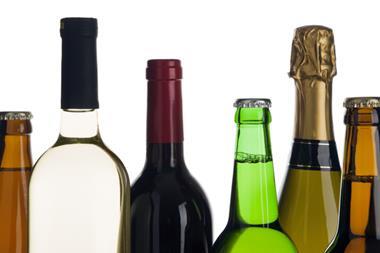




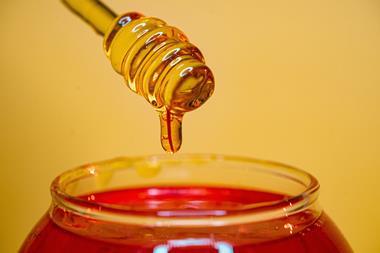
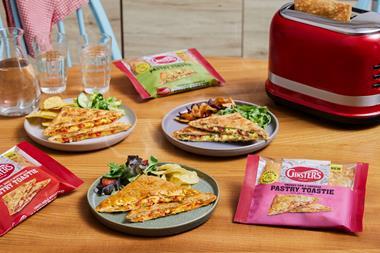

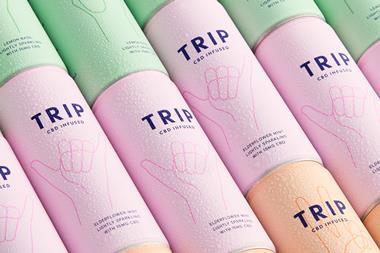
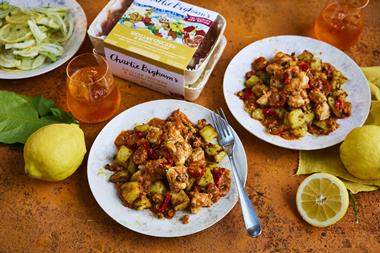
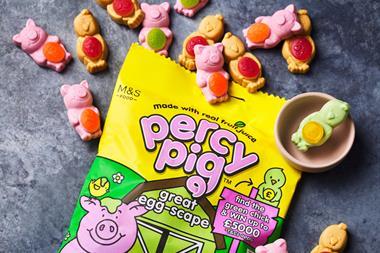
No comments yet